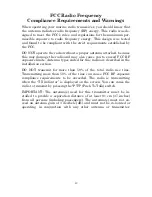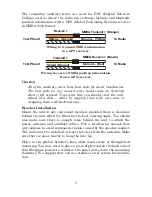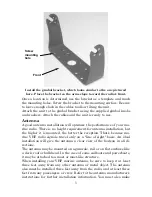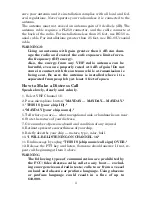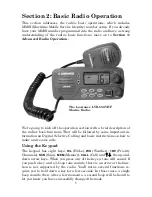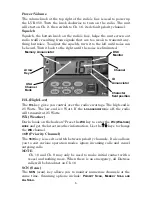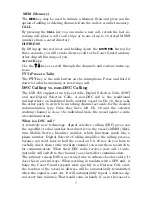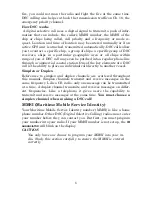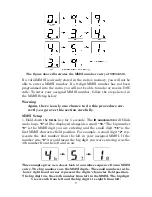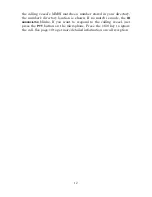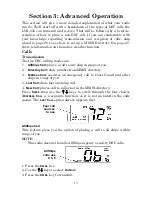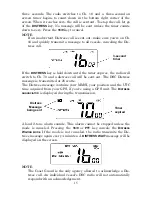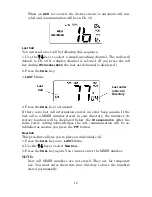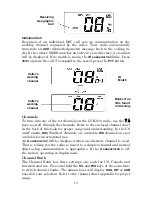
4
sure your antenna and its installation complies with all local and fed-
eral regulations. Never operate your radio unless it is connected to the
antenna.
The antenna must not exceed an antenna gain of 3 decibels (dB). The
antenna cable requires a PL259 connector, and the cable connects at
the back of the radio. For installations less than 25 feet, use RG58 co-
axial cable. For installations greater than 25 feet, use RG-8/U coaxial
cable.
WARNINGS:
Using an antenna with gain greater then 3 dB can dam-
age the radio and exceed the safe exposure limits for ra-
dio frequency (RF) energy.
Also, the energy from any VHF radio antenna can be
harmful, even one properly rated at 3 dB of gain! Do not
come in contact with the antenna while a transmission is
being sent. Be sure the antenna is installed where it is
separated from people by at least 3 feet of space.
How to Make a Distress Call
Speak slowly, clearly and calmly.
1. Select VHF Channel 16.
2. Press microphone button: "
MAYDAY — MAYDAY— MAYDAY."
3. "
THIS IS [your ship ID]."
4.
"MAYDAY [your ship name]."
5. Tell where you are
—
what navigational aids or landmarks are near.
6. State the nature of your distress.
7. Give number of persons aboard and condition of any injured.
8. Estimate present seaworthiness of your ship.
9. Briefly describe your ship
—
meters, type, color, hull.
10. "
I WILL BE LISTENING ON CHANNEL 16."
11. End message by saying "
THIS IS [ship name/call sign] OVER."
12. Release the PTT key and listen. Someone should answer. If not, re-
peat call, beginning at Item 3 above.
WARNING
The following types of communication are prohibited by
the FCC: false distress calls; calls to any boat — exclud-
ing emergencies and radio tests; calls to or from a vessel
on land and obscene or profane language. Using obscene
or profane language could result in a fine of up to
$10,000.






